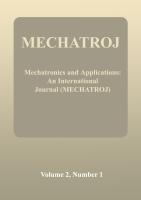Abstract
Skin lesions due to neglected tropical skin diseases which are endemic in landlocked areas with a high morbidity rate as very often disabling when not quickly detected and treated like Buruli, ulcer, yawl, leprosy etc. then we need. The development of an electronic diagnostic tool with low power consumption will be of great importance for its landlocked regions without electricity. The main advantage of the SAR ADC is the possibility to avoid power consuming operational amplifiers (OPAMPs), which can therefore be used in these diagnostic devices. In this paper we propose a neural ADC-SAR capable of detecting low power and low voltage signals and capable of converting these analogue signals to digital signals for less power consuming diagnostic devices that can be used in remote areas where these diseases are prevalent. The comparison is made with conventional ADC SAR with an ideal DAC. An electronic neuron DAC is designed from an artificial neural network that learns a sinusoidal signal for testing purposes. The results of the neural module show a regression coefficient very close to 1 (0.99) and an MSE of 0.98 permit us to obtain the best weight of our electronic DAC Neurons. Compared to the ADC-SAR with an ideal DAC our architecture seems to have very good properties regarding signal to noise ratio, ENOB, THD, SFDR and SINAD with low voltage signal (0.5 to 1V). which proves that there is an improvement in the error of nonlinearity with our model and it can be implement in biomedical signal which are low power signal.
